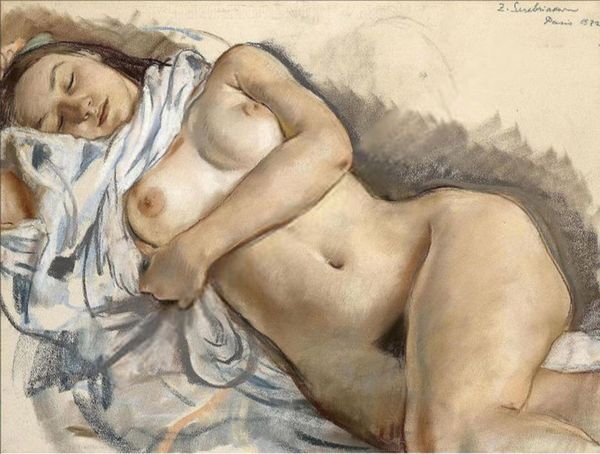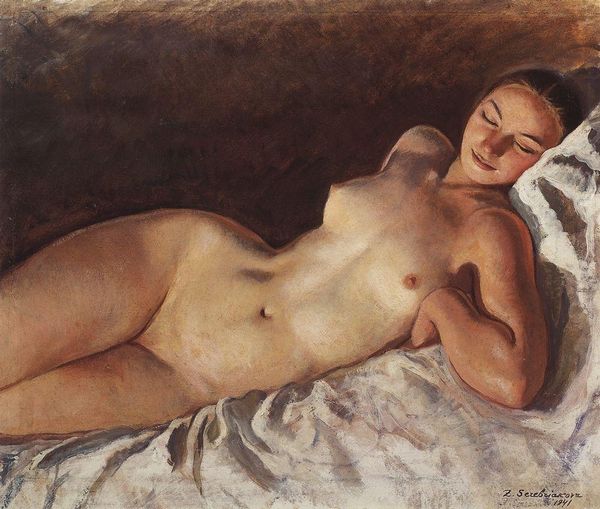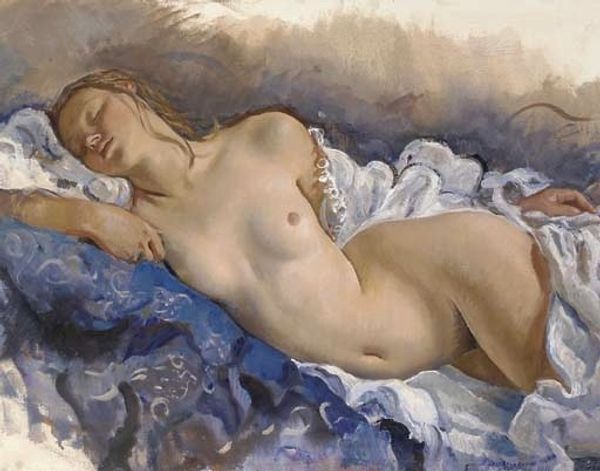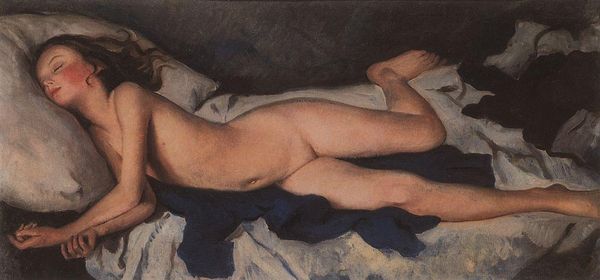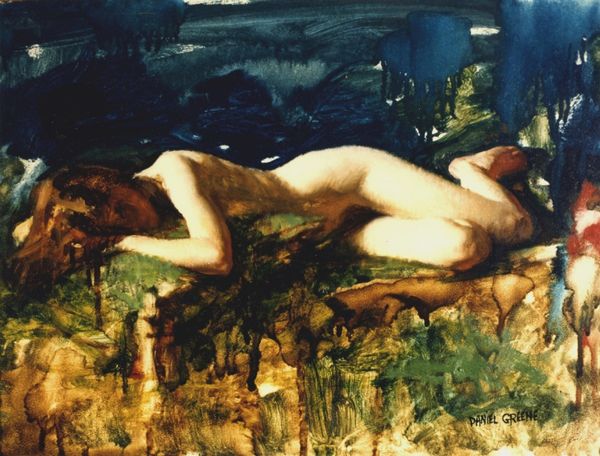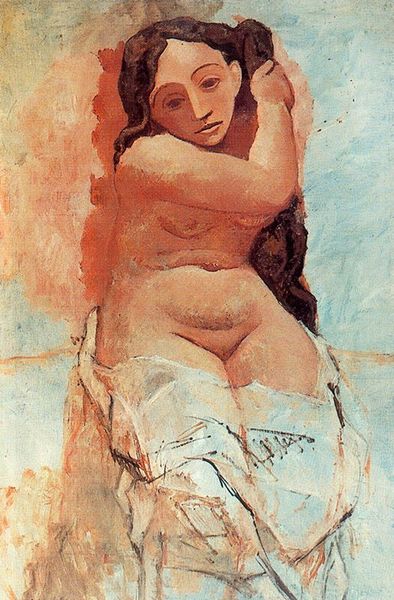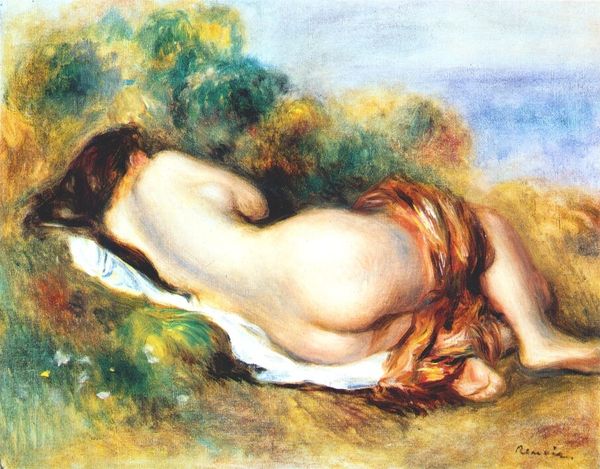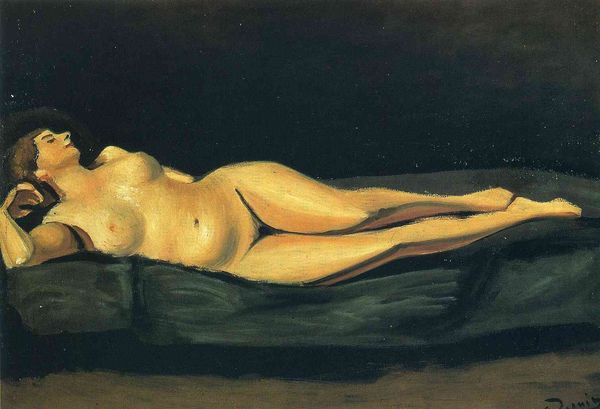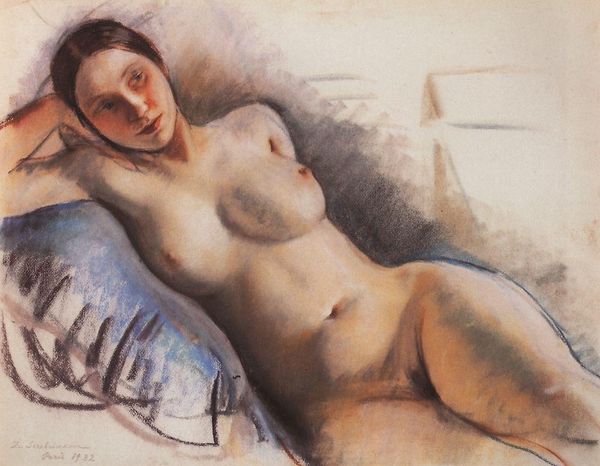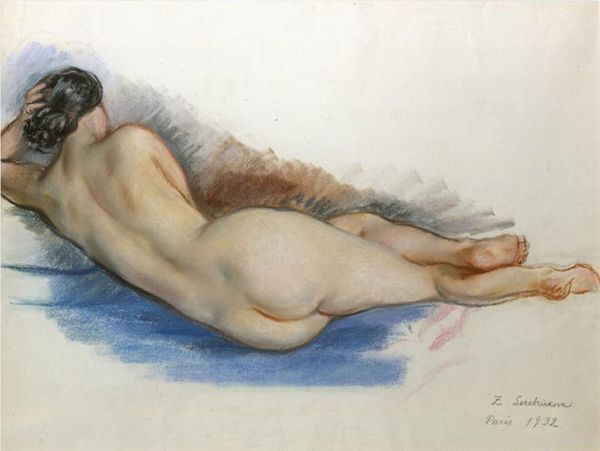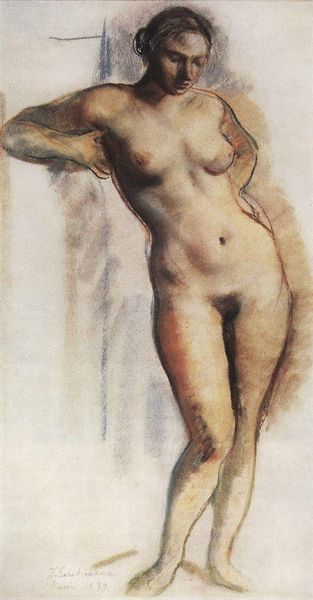
painting, oil-paint
#
portrait
#
painting
#
oil-paint
#
charcoal drawing
#
oil painting
#
female-nude
#
portrait drawing
#
nude
#
realism
Copyright: Zinaida Serebriakova,Fair Use
Curator: This is Zinaida Serebriakova's "Nude," created in 1927. It's rendered in oil on canvas. Editor: It feels very tactile; the rendering of skin against what appears to be either drapery or raw fur has this visceral impact. You feel like you could reach out and almost feel the coolness of the marble underneath. Curator: The fascinating element for me lies in Serebriakova’s handling of paint itself. Note how the visible brushstrokes, applied almost sculpturally, add weight and presence. You can feel the labor in this artwork, pushing beyond the bourgeois conceptions of art production as effortless. Editor: Absolutely, and when viewed within its historical context, produced amidst the growing restrictions on artistic expression in post-revolutionary Russia, the presentation of the female nude became more than a matter of simple aesthetics. Were these images intended for open exhibition or private circles? The social implications and access surrounding such art become charged political territory. Curator: Precisely. Consider also how the artistic traditions surrounding depictions of the female form influence not just the ‘what’ but also the ‘how’ here. We see evidence of a clear dialogue with European conventions—yet filtered through a uniquely Russian sensibility tied to the labor inherent in its creation. Editor: I agree; the institutional context is paramount. What were the dominant styles sanctioned at the time, and how did Serebriakova’s work negotiate those boundaries? Was she attempting to re-assert or subvert artistic standards under tightening political constraint? Curator: And look at the pigment itself. The warm ochres and umbers give the figure this earthy solidity. How do these choices align with what we know about access to resources, art training, and patronage available to her during this turbulent period? The canvas, the oil paints—their very presence reveals details of artistic survival. Editor: Thinking about its reception adds further layers. For those outside the art circles, did her presentation of idealized feminine forms uphold or defy expected social norms under new power structures? It sparks intriguing questions on the dialogue between art and its beholders within a constantly reforming society. Curator: Absolutely, thinking about how art’s reception and existence shape society can drastically change an artwork’s meaning over time. Editor: True. And in recognizing those implications, our encounter today moves beyond a singular experience into collective reflection.
Comments
No comments
Be the first to comment and join the conversation on the ultimate creative platform.
